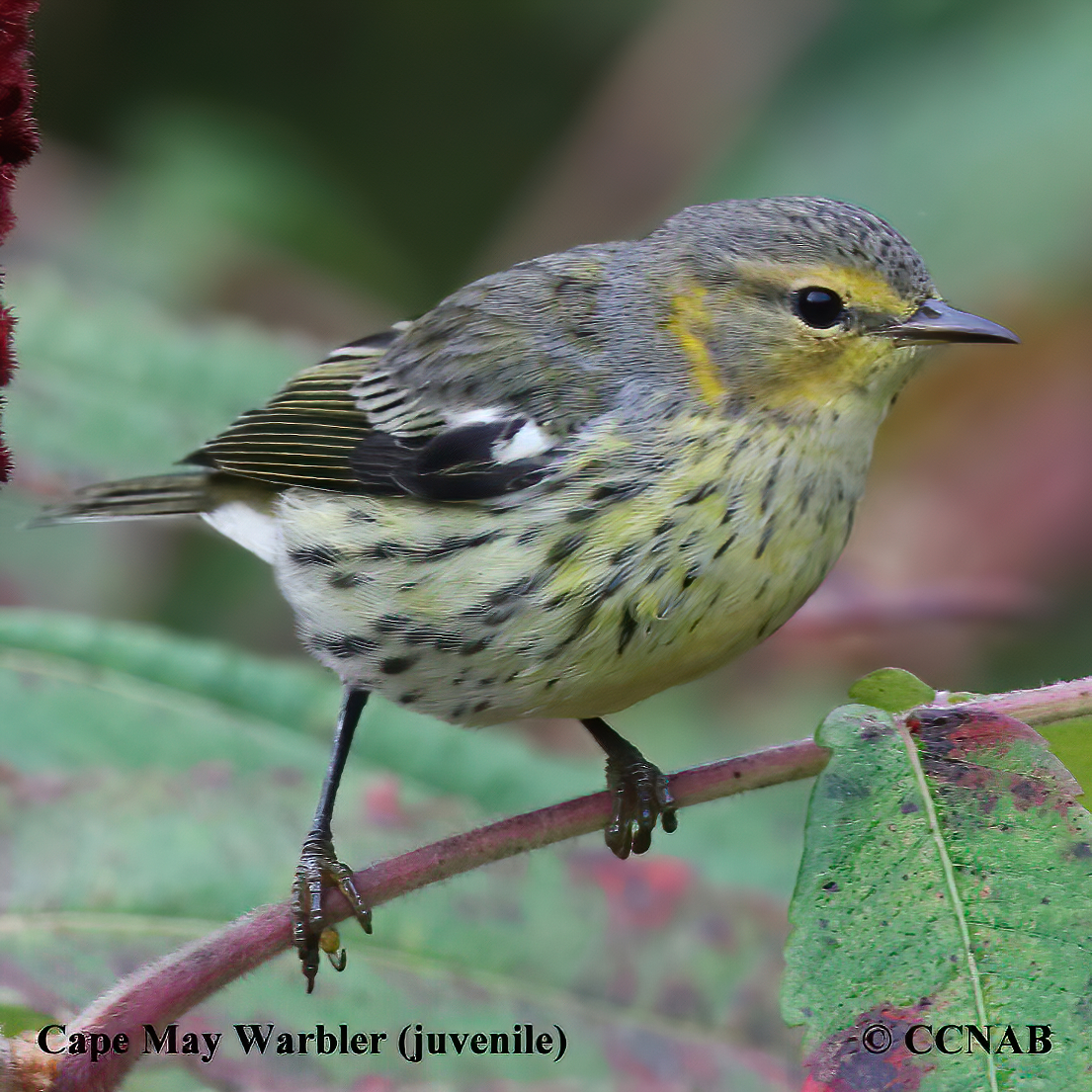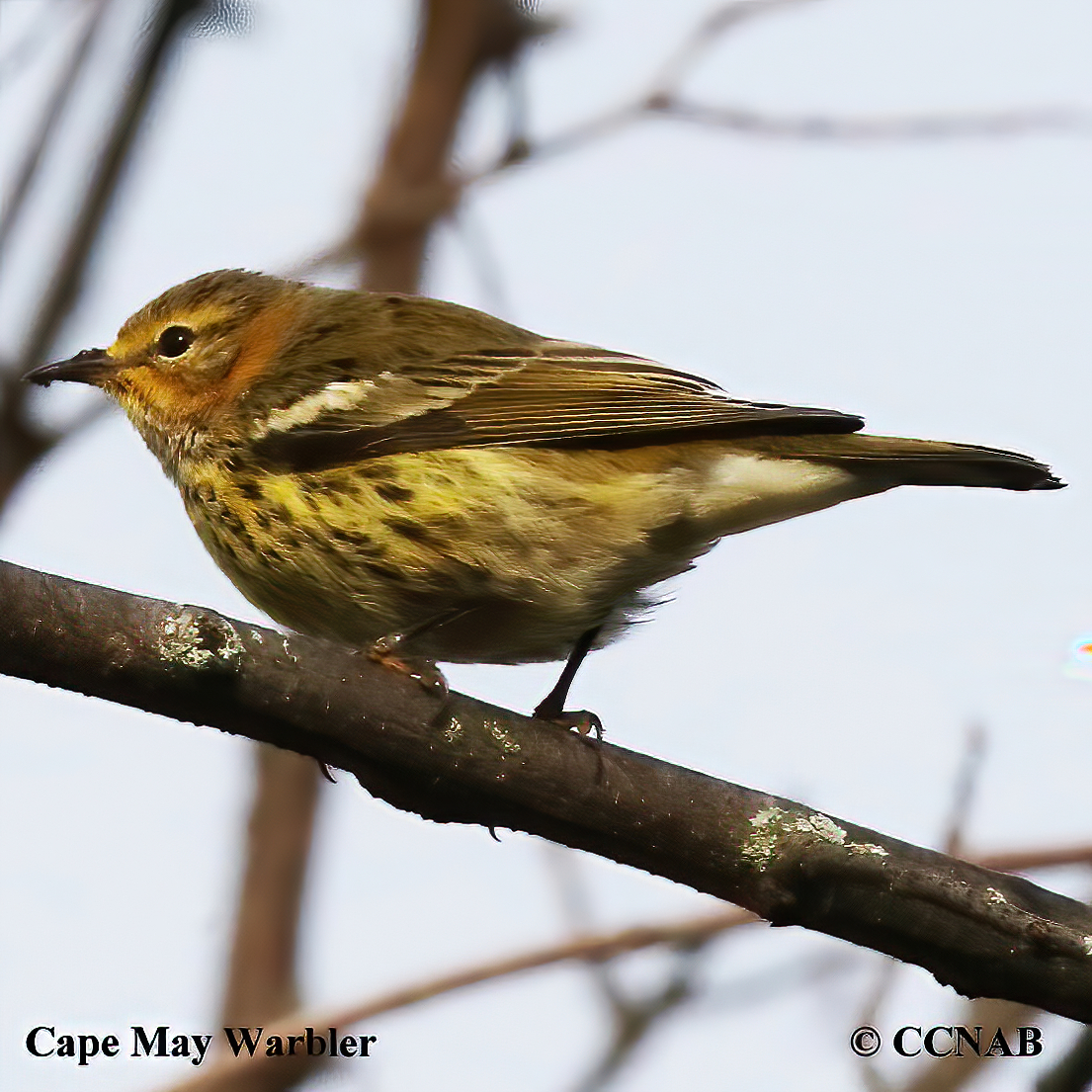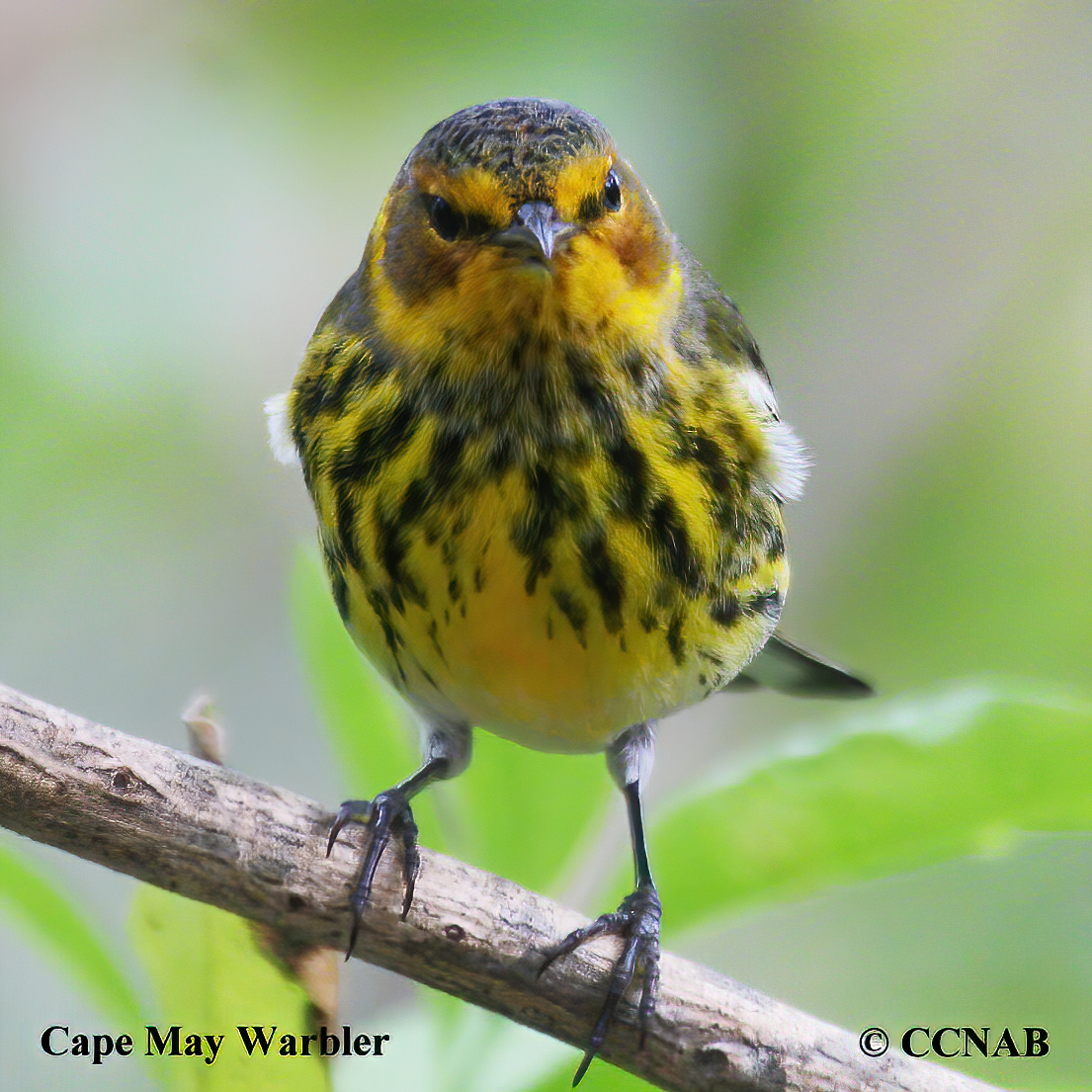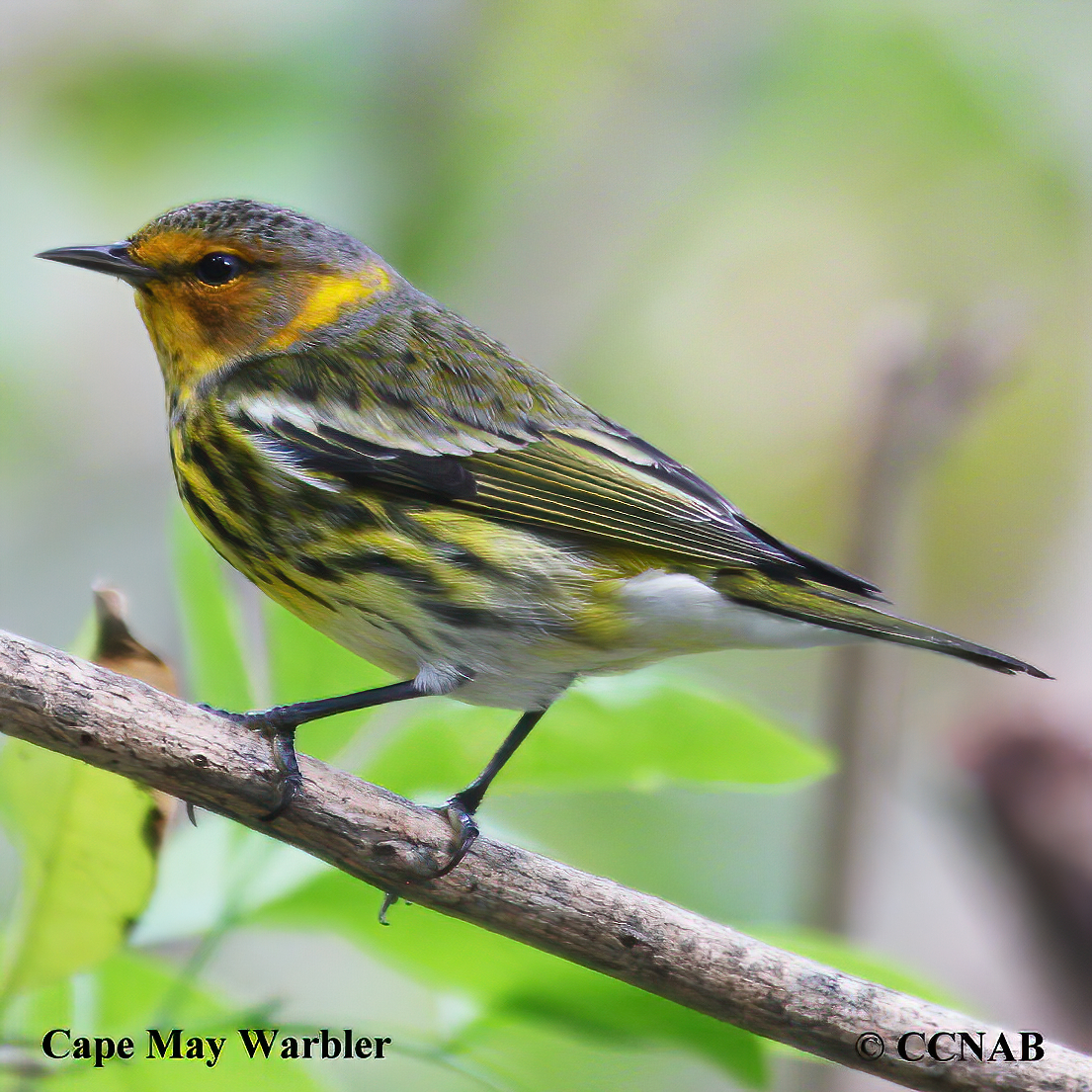North American Bird Search Box
This search box can be used to find bird species using bird's english, french or latin name, or to identify bird by its 4 letter Alpha Code
Field Guide for all the Birds of North America
Cape May Warbler
4 Letter (english names) Alpha Code: CMWA (1)
Paruline tigrée
Setophaga tigrina
Information, images and range maps on over 1,000 birds of North America, including sub-species, vagrants, introduced birds and possibilities
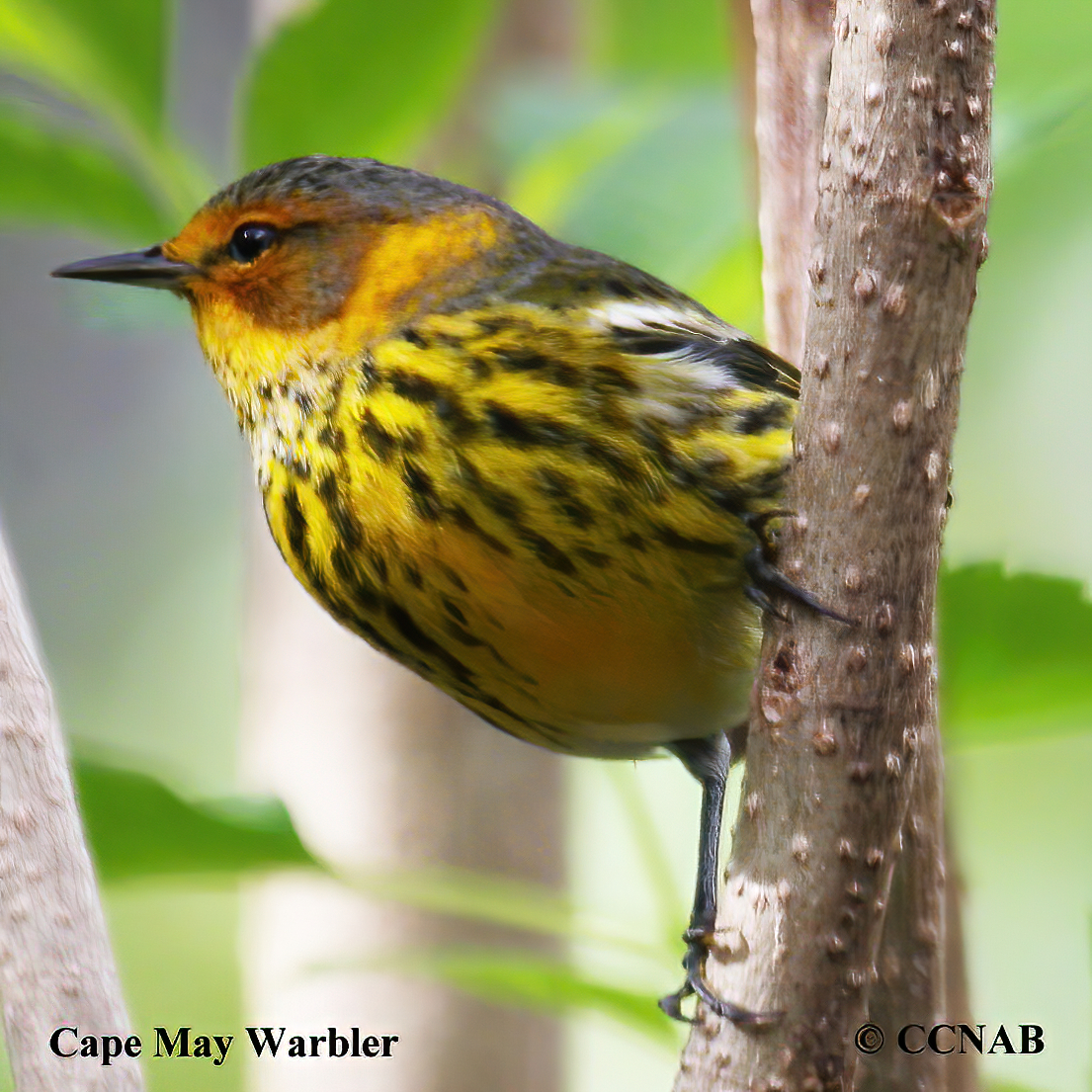
Species: The Cape May Warbler (Dendroica castanea), especially the male, has some of the most contrasting and beautiful colours of all warblers seen in North America. Its breeding range is almost entirely in Canada, with some exposure south of the Great Lakes and along the northern boundaries of the northeastern states. The Cape May Warbler is known for defending its territory rigorously against all other bird species. Its main diet is the spruce budworm when it is in the north. But, interesting enough, it changes its diet to nectar and fruit when it is on its winter grounds. The juveniles, because of their visible yellow rump, might be confused for the immature Yellow-rumped Warblers.
Distinctions: The male has contrasting green-coloured stripes of crown, more so on the back, rump and tail. Dark green wings with a large white wing patch. Yellow supercilium, chin and on the side of the neck. Dark eyeline, with large reddish-orange cheeks. Yellow breast with multiple bold dark streaks, white undertail coverts. The female and juveniles have a similar appearance, without the reddish-orange cheeks and with duller colours overall.
Voice: Chipping call, songs sound like "seet-seet-seet-seet", repeated often.
Nesting: Three to eight creamy coloured eggs with brown markings, number of young depends on the budworm infestation. Builds a nest high in spruce trees. The nest is composed of leaves, twigs, moss and lined with fine grasses.
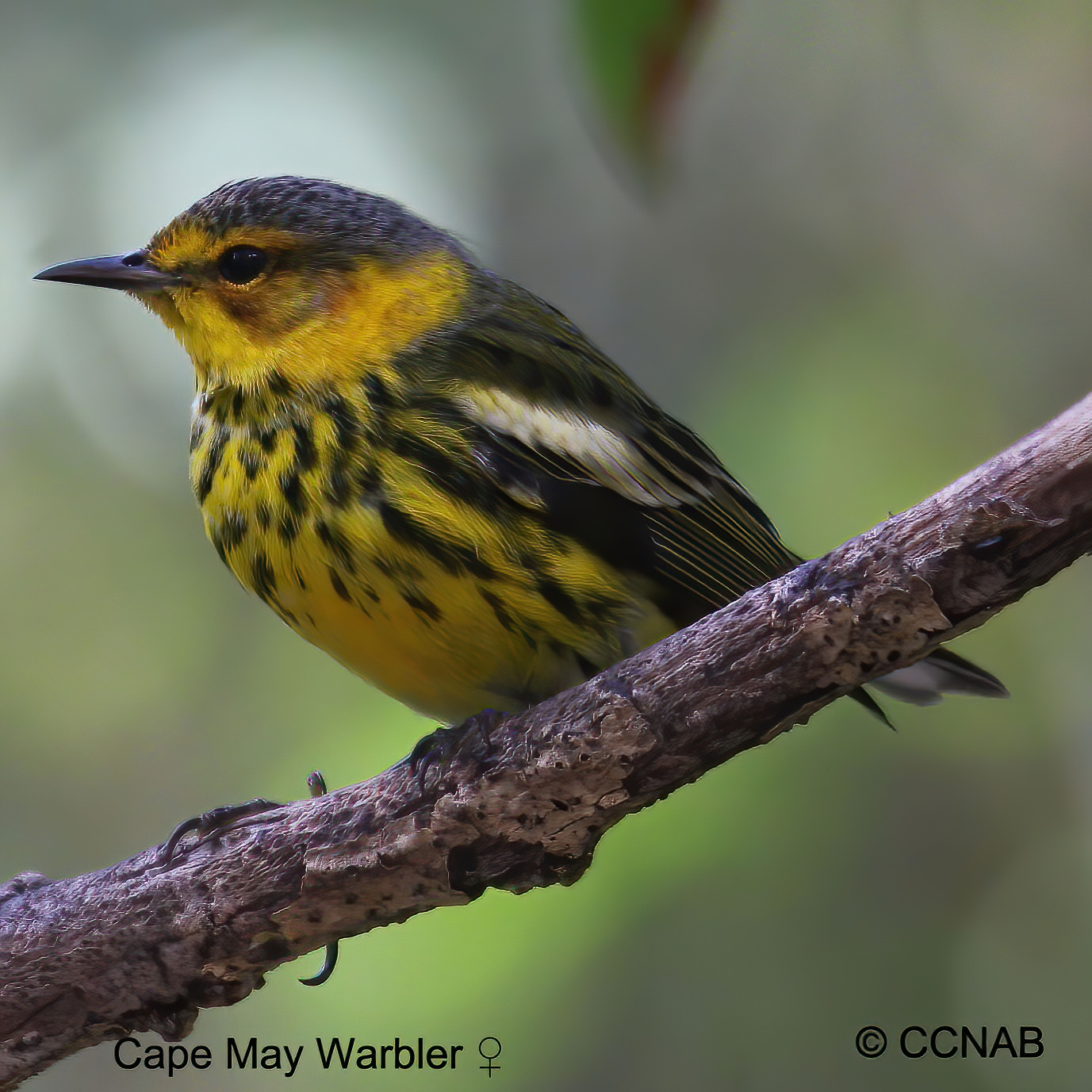
Life, Habitat & Pictures of the North American Warblers
| B L | W W | W | Family | Latin Name |
|---|---|---|---|---|
| 5" 12.7cm | 8.25" 21cm | 0.4oz 11.3g | Parulidae | Setophaga tigrina |
North American Birds Videos
- Click here - Male
- Click here - Male
North American Bird Calls
- Click here
- Summer
- Year Around
- Winter
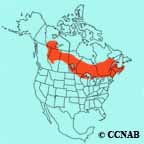
Distribution: Found from the western tip of Newfoundland, through the lower half of Quebec, north to James Bay and across all the western provinces, north into the Northwest Territories, touching the Yukon and British Columbia. Around some of the Great Lakes, most northeastern states northern boundaries and all of New Brunswick and most of Nova Scotia. Spends its winters on the Caribbean islands and in South America.
Reference to Other Bird Site:
ABA - American Birding Association This site represents an organization that maintains official records of all birds species that have been proven to have been seen inside the perimeters of the North American Continent and the surrounding bodies of water. Regular revised versions are posted to keep the bird list current at all times. This is the list used by all serious birders over their lifetime. You may be aware of the movie called the "Big Year". It was with this list that all the competing birders used in an attempt to set a new record as to how many bird species that could be seen by an individual birder in one calendar year.
